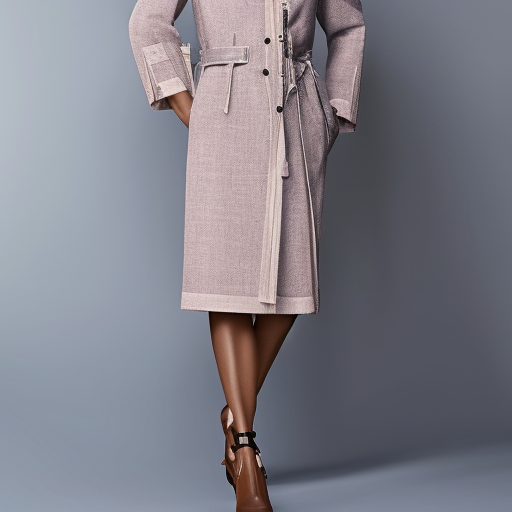Summary:
Ready-to-wear, also known as prêt-à-porter, refers to clothing that is mass-produced and available for purchase in standard sizes. It is designed to be worn without any alterations and is typically more affordable than haute couture. Ready-to-wear collections are created by fashion designers and brands, and they play a significant role in the fashion industry, offering a wide range of styles and trends to consumers.
History of Ready-to-Wear:
Ready-to-wear emerged in the mid-19th century as a response to the growing demand for fashionable clothing that was more accessible and affordable. Prior to this, clothing was primarily made-to-measure or custom-made, which was time-consuming and expensive. The Industrial Revolution played a crucial role in the development of ready-to-wear, as it allowed for the mass production of garments using machines.
Advantages of Ready-to-Wear:
One of the main advantages of ready-to-wear is its accessibility. Unlike haute couture, which is made to order and often requires multiple fittings, ready-to-wear is readily available for purchase in stores or online. This makes it more convenient for consumers who want to stay up-to-date with the latest fashion trends without the need for custom-made garments.
Another advantage is the affordability of ready-to-wear. Since it is mass-produced, the cost of production is lower, resulting in more affordable prices for consumers. This allows a wider range of people to access fashionable clothing without breaking the bank.
Design and Production Process:
The design and production process of ready-to-wear involves several stages. Fashion designers and brands create collections based on trends, inspirations, and market research. These collections are then presented at fashion shows or showcased through lookbooks and presentations.
Once the designs are finalized, the production process begins. Garments are manufactured in factories using industrial sewing machines and assembly line techniques. Fabrics are cut, pieces are sewn together, and finishing touches such as buttons and zippers are added. Quality control measures are implemented to ensure that the final products meet the brand’s standards.
Ready-to-Wear vs. Haute Couture:
Ready-to-wear and haute couture are two distinct sectors of the fashion industry. While ready-to-wear focuses on mass production and accessibility, haute couture is all about exclusivity and craftsmanship. Haute couture garments are made to measure and are created by skilled artisans using high-quality materials. They are often one-of-a-kind pieces and are extremely expensive.
Ready-to-wear, on the other hand, caters to a larger market and offers a wider range of styles and sizes. It allows consumers to express their personal style and stay on-trend without the need for custom-made garments. While ready-to-wear may not have the same level of craftsmanship as haute couture, it still offers well-made and stylish clothing options.
Impact on the Fashion Industry:
Ready-to-wear has had a significant impact on the fashion industry. It has democratized fashion, making it accessible to a wider audience. It has also contributed to the growth of fashion brands and the expansion of the retail industry. Ready-to-wear collections are now a staple in fashion weeks around the world, showcasing the latest designs and trends.
In conclusion, ready-to-wear is an essential part of the fashion industry, offering accessible and affordable clothing options to consumers. It has a rich history and has revolutionized the way people approach fashion. Whether it’s a basic t-shirt or a statement dress, ready-to-wear collections provide a wide range of styles and trends for individuals to express their personal style.












